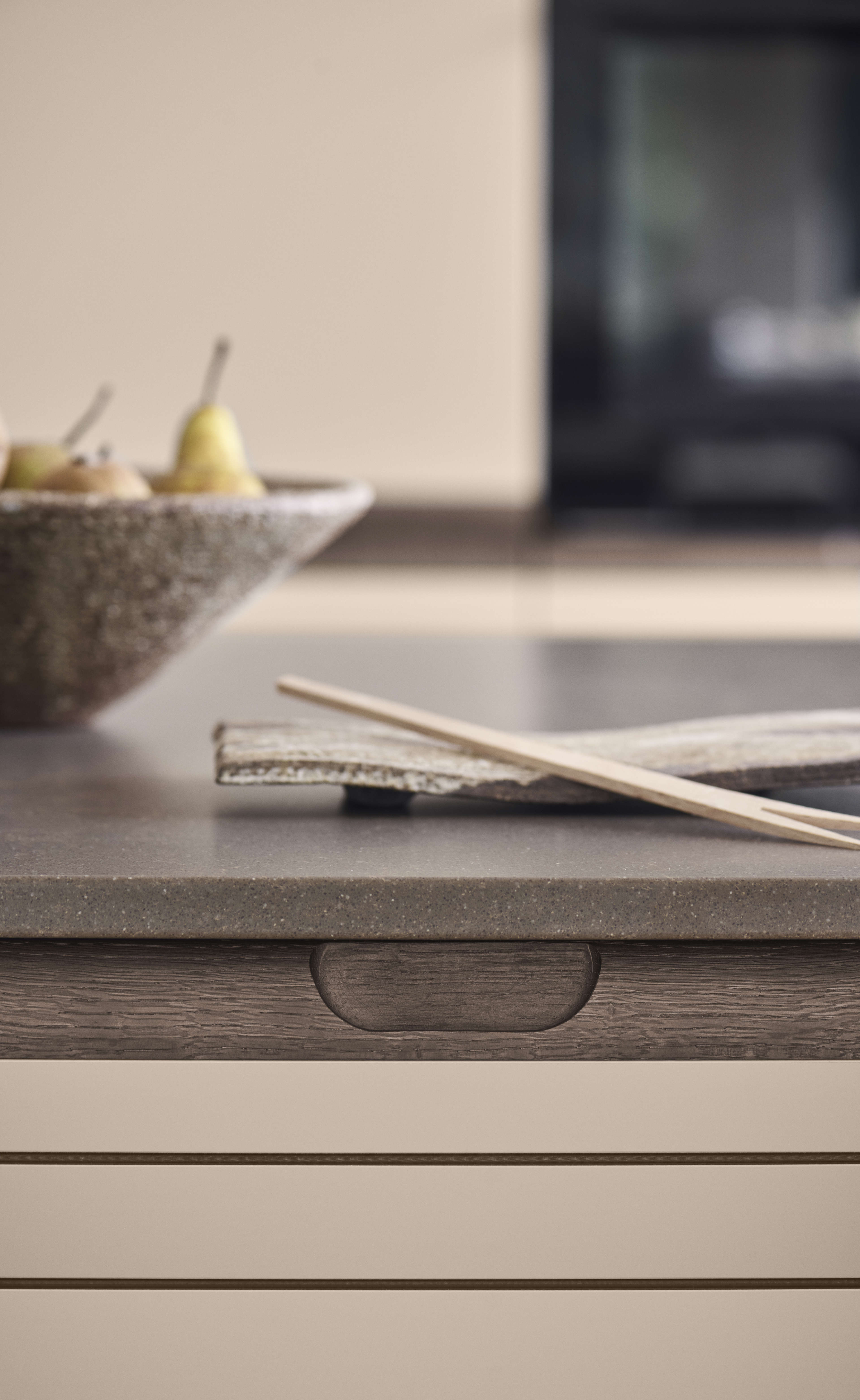
Danish design — Meet Rikke Frost
Welcome to The Sociable Kitchen® — a podcast by Kvik. I’m Julie Broberg. We’re happy to be back with some new episodes on our favourite topic - Danish design!
Today, we’re sitting down with one of the hottest furniture designers in Denmark, Rikke Frost. She graduated from the School of Architecture in Aarhus with a degree in industrial design back in 2000. She started her own studio in 2004 after stints as in-house designer at Hammel Furniture and Heal & Son in the UK.
She made a splash here in Denmark back in 2019 with her appearance on Danish broadcaster DR’s program, Denmark’s Next Design Classic, where she won two of the six challenges and was the overall winner with her stool for children. One of the designs she did for the show, the Sideways sofa, is now produced by Carl Hansen & Son and a chair and coffee table have joined the family. The Caleo lamp she created on the show is today a lamp series from LeKlint.
But the reason we’re talking to Rikke is because she’s designed a kitchen for us. It’s called Align and it will be coming out in September of 2025.
Note: this page is a transcript of the episode.
Julie: So you've done a lot of furniture over all these years, and then Kvik came to you and said, would you be interested in doing a kitchen for us? A kitchen is a little bit more architecture actually - it's architecture within the home. So how did you approach that? What did you think when they asked?
Rikke: I thought it was very interesting because I'd never done this and I quite like doing things I've never tried before. I don't think, I thought it would be this challenging. It is actually quite hard to make something so full of factors you have to consider.
There are a lot of restrictions and lots of measurements that are just already there. And then also you cannot just make something totally crazy.
In a piece of furniture, you're more free. And in kitchens, you have to come up with something that is different but not so different because then it's gonna be not so commercial and maybe not so long-lasting. And so when you first dig into it, it's actually more complex and more challenging that I thought it would be.
But it was great working on a project like this because also it's so specific to a work task. It's like a workstation, a kitchen mostly for most people. And it's also specific for the room it's put into.
Whereas if you may get a lounge chair, something, you can put it in a bedroom, you can put it in the living room or in a children's room or in a lobby.
Or in an office space or, so this is very specific. Yeah. A kitchen is a kitchen. So this is also great because you know where it's put. And you know what it has to do.
Julie: So sometimes having a kind of strict frame is actually makes it interesting, right? Yes. And lets you, enables you to focus on solving a problem.
Rikke: I like it. It's trying to solve a problem. And maybe that's also coming back to my education as an industrial designer you solve whatever you are working on. I like it when it's not just a blank sheet of paper.

Julie: So how did you solve the problem? Where did you find the inspiration that you then put into it?
Rikke: Human behaviour and the functionality. For me it's all about this workstation. So we have to work around this and to me kitchens are mostly full of sharp edges and it's really annoying when you bump into them.
So I think I started with trying to round things so that they wouldn't...so they would be more friendly and more welcoming.
Julie: Humanising somehow?
Rikke: And then because I'm a fan, a big fan, of wood, I love wood. I would put in some wood. That's where I think tactility and sensory feelings are really important to human beings. And I think we've forgotten this for a long time. We've forgotten about craftsmanship and tactility. We didn't think it was important, so everything was flat and glossy and lacquered. So we couldn't feel anything. It was mass produced and just sleek. And now I think in Covid everybody started doing their own little knitting, embroidery, pottery projects.
Julie: Oh, things with their hands. Yeah. Things where the tactile nature of it was important.
Rikke: Yes. And I think that's where most people also discovered that this is good for your mental health and it's good for your hands and understanding of design and the importance of it.
This is not new to me because I work with this every day, but it's new to maybe some people who hadn't thought of this. So I'm bringing it back into the kitchen.
Julie: And how did you do that? I know it's hard. We're a podcast, we're not a visual medium. So describe where you put the tactile features.
Rikke: So the feature is on the handle. Because this is where you touch the kitchen. You open drawers, you open doors. So this is where I've put a wooden rail with a handle carved in so you can feel the edges of this, and you can feel the wood. And and then on the corners of the kitchen, it meets a wooden rail again, which is also rounded.
So you instantly...that's what I hope, is that you would touch there with your hands and then it meets the foiled door. So this is like this smooth surface that then will meet this little bit of texture in the wood. This is a big contrast. And then whatever worktop you put on the kitchen table.
Yeah, this will also be a mix. So this was all, this is also going to meet the wood and the foil, so there'll be three different types of texture that you will meet with your hands every day.
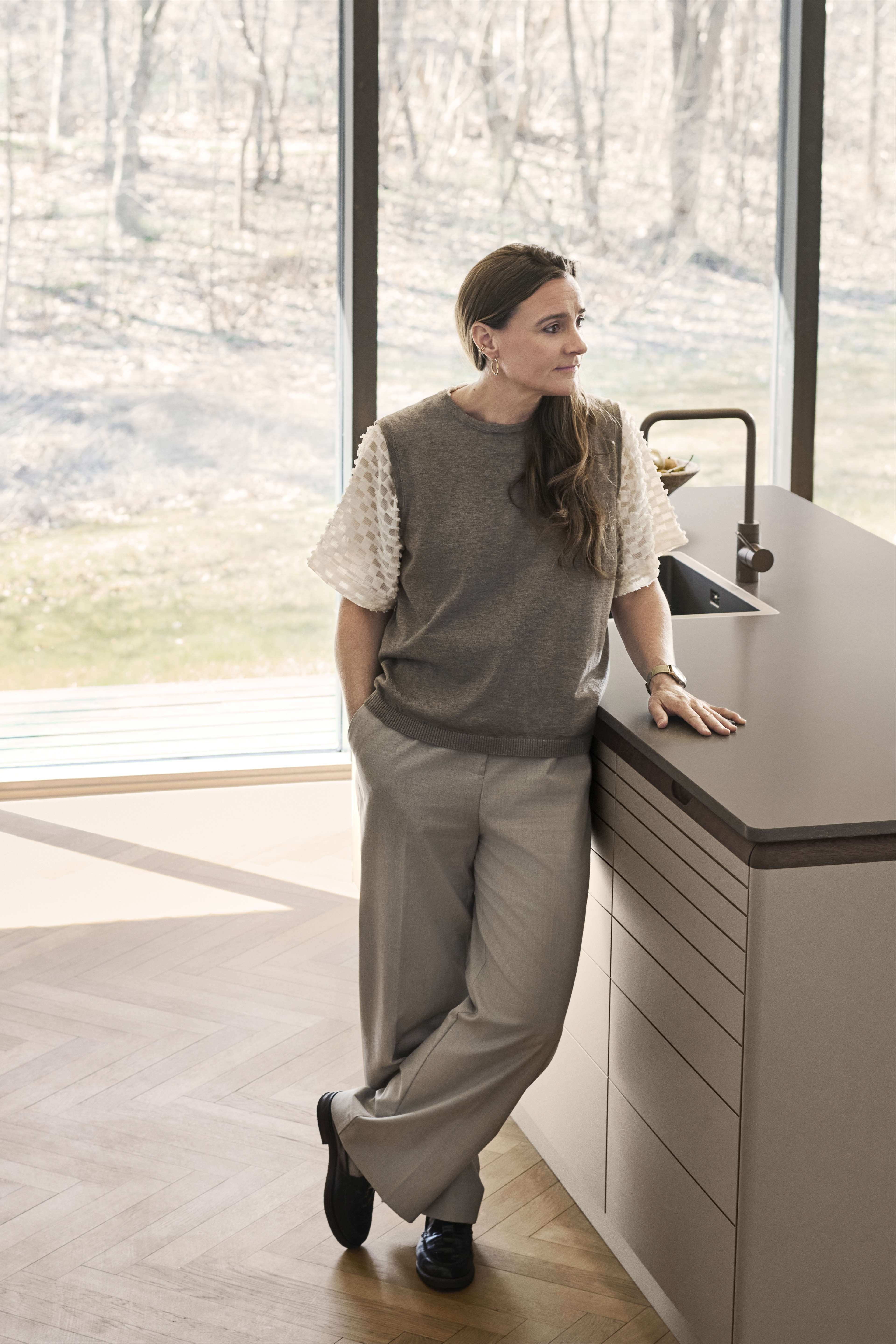
As you can gather, Align is a very tactile kitchen. The top part of the lower cupboards features a solid oak integrated handle, stained in a rich, dark brown colour. The doors are made of recycled MDF and have 7 grooves that make up the striking lines of the design. The fronts are coated with recycled PET foil in a warm, clay colour that creates a contrast with the dark oak handle, making it really stand out. The edges at the top are rounded and so the worktop sort of floats above the cupboards below, creating a unique and elegant look. And it creates something really special where the three materials - the smooth foiled front, the solid oak handle and the cool worktop meet.
Julie: The philosophy behind your studio is this minimal, magical, mindful, is where those where those three meet, is that magical somehow?
Rikke: Yes, I think that's maybe magical isn't the word, but it's something where you will discover with your hands, something that will store in your mind. And I think maybe not everybody will be aware that they're thinking, oh, wood. Oh, something else. Something third. But I think it will store and it will be a nice memory.
Julie: Yes.. And maybe it will speak to some like humanity in us that we're not even aware of. You just think about these natural materials. If you chose a stone countertop and yeah, then it's the kind of coldness of that and the warmth of the wood.
Rikke: Yes. That's what I hope and that's what I believe in. Yeah. And the minimal is of course, the whole overall look of the kitchen is still minimal. It's even with the curves and with the lines that are put into the kitchen it's still minimal.
Julie: it's still Danish design.
Rikke: Yes. And then of course, the mindful thing is about this, that it's all about human beings and that we work with it and we've worked cleverly with long lasting materials and also I know Kvik is working with recyclable doors or fronts. So this is minimal, magical and mindful in my opinion and the way I work with them.
Julie: We hope so. We hope everyone thinks so.
Julie: I think that the curved lines of it — you're known for the Sideways sofa for Carl Hansen, which is also very curvy. You have a thing with curved lines and then the curved lines of this kitchen. Do you think this is the next thing in Danish design? The curved lines?
Rikke: No. No, not really. It's a humanity thing. Yes. I think it's just because I'm quite drawn to circular lines and rounded things because I believe that we are, as human beings attracted to organic shapes and curves because we are curved, we are not square. Well, LEGO is square and but we're, yeah, we're, we are curved and we are attracted to curves. I believe it creates harmony and balance and this is what we are drawn to and some calmness to the kitchen area where we are connected to each other. And this is where we tell each other stories from the day.
And I believe if you have a place where an atmosphere where it's rounded and welcoming, then I hope it's more likely that you will share things with each other.
Julie: Oh, that'll be so interesting to see, because I think kitchens have had very hard edges for many years now. They're super very square islands.
Rikke: But that's also beautiful. Lots of square things are quite beautiful. It's not that I will never do square things again. As I said, I think if you don't bump into something and get hurt, then that's a big advantage in a kitchen. Also, when you have your kids around, this is nice for them and..
Julie: everyone gathering around the island, if it's got these yeah, these edges, it will just be more inviting.
Cool. Is there, other than the curves and the handle at the top, is there any other small detail that you, especially hope that people appreciate?
Rikke: I think the the countertop is elevated a little bit. And that's both because I come from furniture and I think that's something you would do in a table. But here it's also because I wanted to enhance these curved rails on the top so they will show even more. So this is a detail that I hope that people will notice that, oh, this is not the usual kitchen. This is something different.
Julie: Speaking of something different, Align will literally be taking centre stage on board the Theatre Boat at Nyhavn during 3DaysofDesign in Copenhagen June 18-20. Design enthusiasts from all over the world descend on Copenhagen and the celebration takes place all over the city. And we just knew that this special kitchen had to be revealed during this celebration of Danish design. We’re part of the Kongs Nytorv district and if you’re in town, be sure to stop by! But let’s get back to our conversation with Rikke.
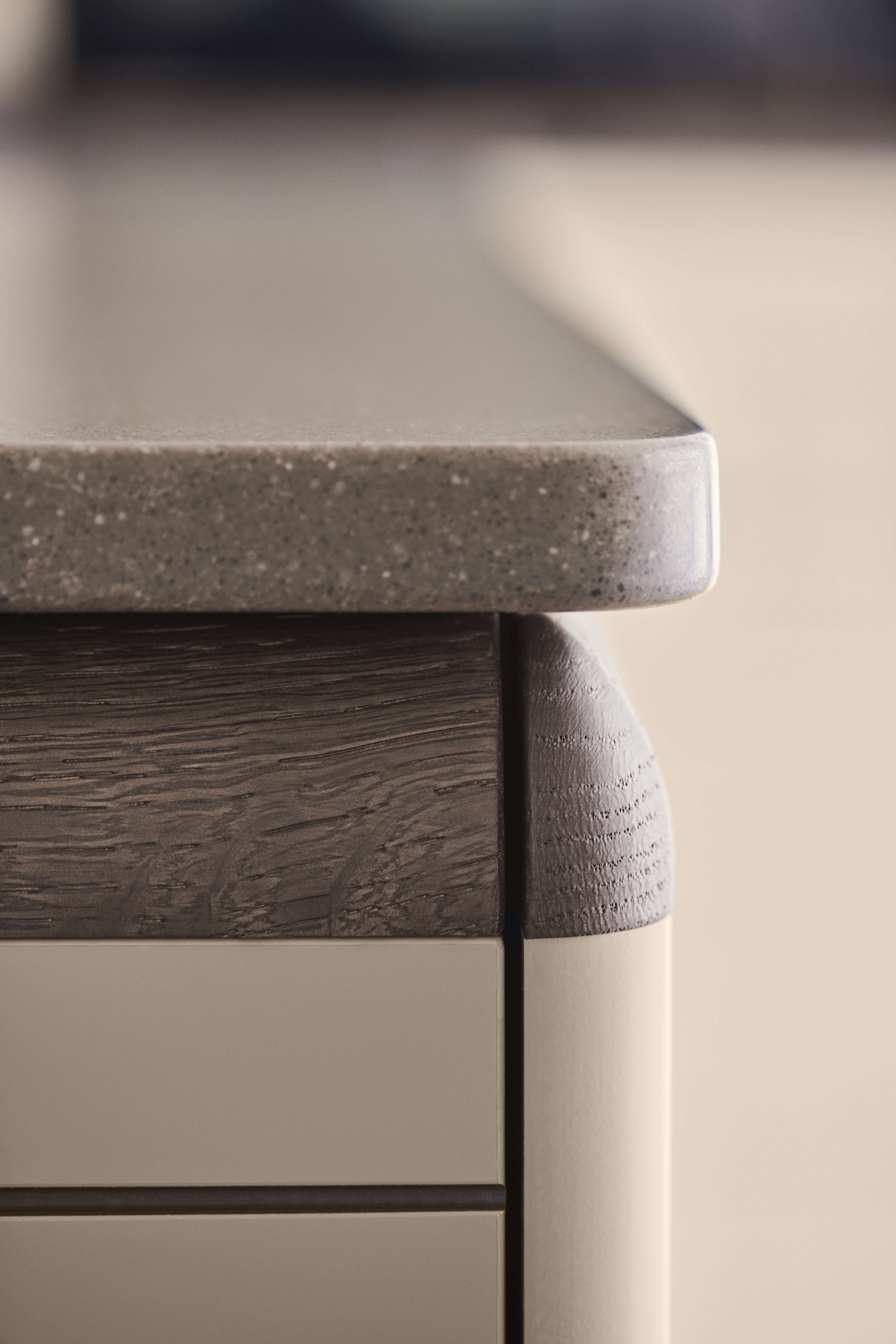
Julie: I want to back up again to when you started thinking about the design, do you sketch on paper? How do you work?
Rikke: Yes. I sketch on paper in the beginning and I do some research on kitchens, and I was in Milan for the furniture fair. I of course made myself a mood board with a lot of images. And also to explain my ideas to Kvik.
Yeah. And then so sketching by hand on paper and then doing some cardboard small mockups, tests. So I did actually with, you can have some foam cardboard and then I cut out lines and put in little wooden pieces to show myself these lines and then in that test, I also did fewer lines. And then I go to do some drawings in 3D on the computer. And then sometimes I go back to drawing by hand because the rail with the handle in it had to be drawn several times. And we did several tests to make sure that you have a good grip that you can actually open the doors no matter what size your hand is.
So this is going forth and back between drawing and testing and drawing and testing in one-to-one.
Julie: So the mood board, did it have kitchens on it or do you have something from somewhere completely different or?
Rikke: I think the mood board didn't have real kitchens. It had more cupboards or, something from the furniture industry. I think maybe there were a few kitchens, but they were. Yeah, it's a mixture between colours as well. There were quite a lot of dark wood as we've chosen to launch as well. And there were these curved edges. But mostly from furniture, not so much from kitchens
Julie: From the beginning, Rikke focused on materials and the quality of the materials. And especially the tactility of materials. There were some technical challenges to solve, but Kvik is good at solving production issues as well as keeping a focus on high quality and so it was a good collaboration with Rikke as the designer.
Rikke: I really like wood, and I think it, it gives you so much, it's such a live piece of material. And it's unique. Every piece of wood is unique, which I really love. It's like human beings .
Julie: and there's some kind of warmth to it. I think wood has something warm about it,
Rikke: but there's something really special in this kitchen as well.
It's actually the curved countertop. You would think this is easy, but it's not actually. And in, in the laminated version, even the edges, that's not so typical for kitchens. So we actually had to look quite far to find a manufacturer that can actually do the rounded edges of the countertop in laminate and also doing it in stone and stuff. So this is new. There might have been rounded edges on other things in the kitchen before. But this is something that we've worked hard to get this result.
Julie: Getting it resolved. We have, we introduced some rounded edge kitchens in the past year as well. So we've been maybe moving towards that a little bit.
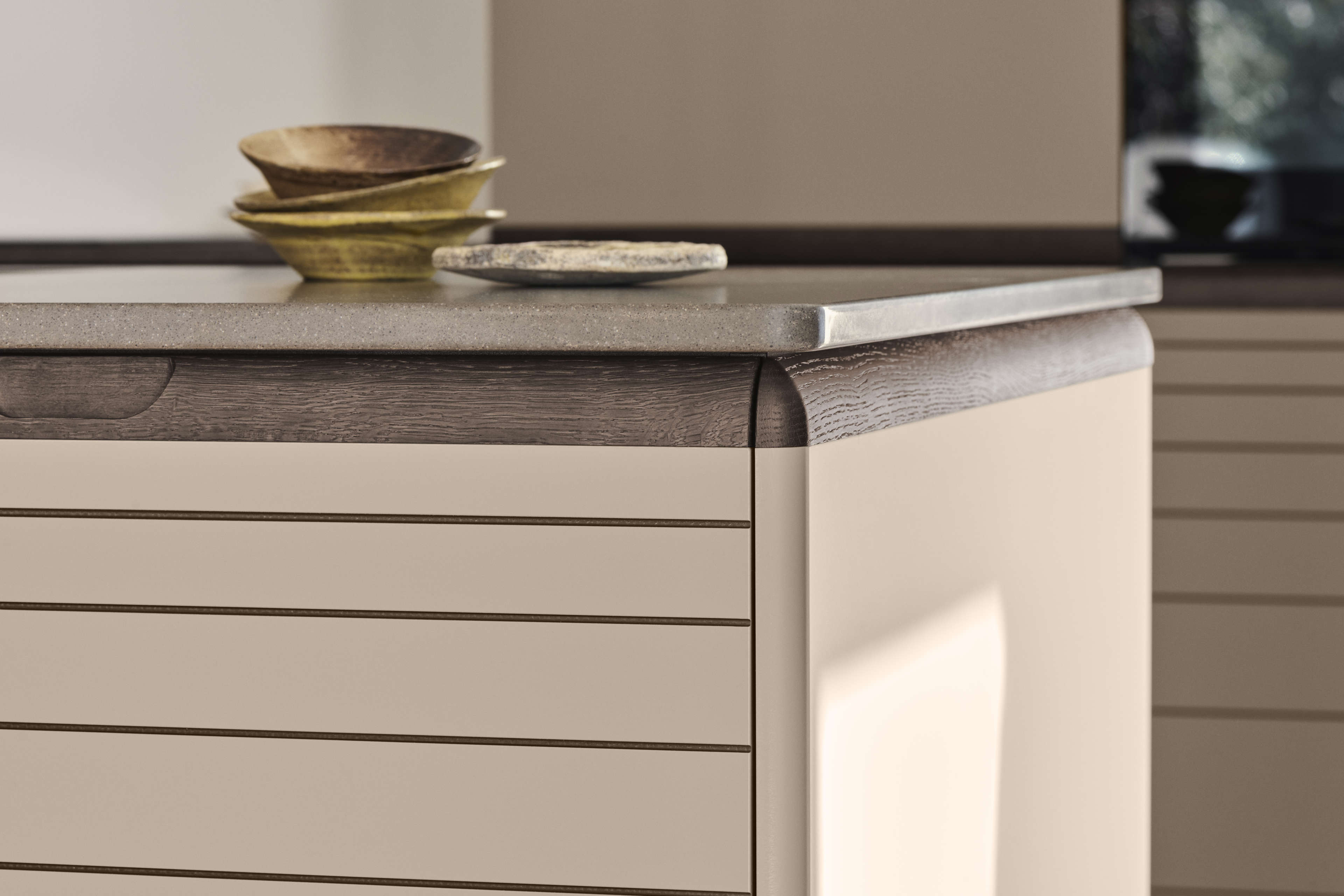
Julie: Does this kitchen tell a story? Or what story would it tell if it could?
Rikke: I think Kvik has been brave to actually work very hard on the craftsmanship and to also be brave to put these lines into the kitchen because it is a bit different to what is out there and also different to what Kvik has in its range at the moment.
So it tells the story about us wanting to put craftsmanship and really cherish and how do you say...we've made an effort. We really put effort into this kitchen, and I hope that people will see this. And the story is that hopefully, I cross my fingers, that if you put effort into it, and if you put craftsmanship into it, it's worth it.
Julie: People will see that. Instinctively, yes. Whether they say it out loud. It will instinctively come through for people. Kvik came up with the idea of the SamtaleKøkken® - The Sociable Kitchen® back in 1998. Now every kitchen is a sociable kitchen. Everyone has that. And I think people don't necessarily know that Kvik invented that term in Danish — samtalekøkken and it's in the Danish dictionary and everything. It was so revolutionary but it became this thing that everyone has. And so maybe all the kitchens will have rounded corners and beautiful lines going forward. We want to lead the way again.
Rikke: Yes.. But what I hope is really that we will put forward about craftmanship and about the having human beings in focus, not just for the sake just making products, just because we can, but really thinking about the functionality in it and really thinking about who's gonna use this and...
Julie: And how are they gonna use it. Are the kids are going to gather around and do their homework at that island while you're finishing dinner.?
Rikke: And so I hope this will be in focus again. This is really important actually.
Julie: Yes, it seems like the world could use some focus on humanity at the moment. So let's do that. Yes, for sure.!
Rikke: To me it's always magical when I see people actually use the products I've designed. It's just such a great pleasure for me to see it work in real life and not just something I thought in my mind. That's magic to me. So hopefully this will come out to a lot of people's homes and it will work the way they hoped it would work and the way I hope it will work. That will be magic to me.
Julie: We hope so too! A big thank you to Rikke Frost for sitting down with us to talk about setting a new standard in Danish kitchen design.
You’ll be able to get a sneak peek at the magic of our new Align kitchen, designed by Rikke Frost, during 3DaysofDesign 2025 in Copenhagen and it will be coming to a Kvik store near you in September 2025. If you’re in Copenhagen June 18-20, be sure to stop by the Theatre Boat at Nyhavn to see Align!
Thank you for listening to this episode of The Sociable Kitchen® podcast.
Want to learn more about Danish design?
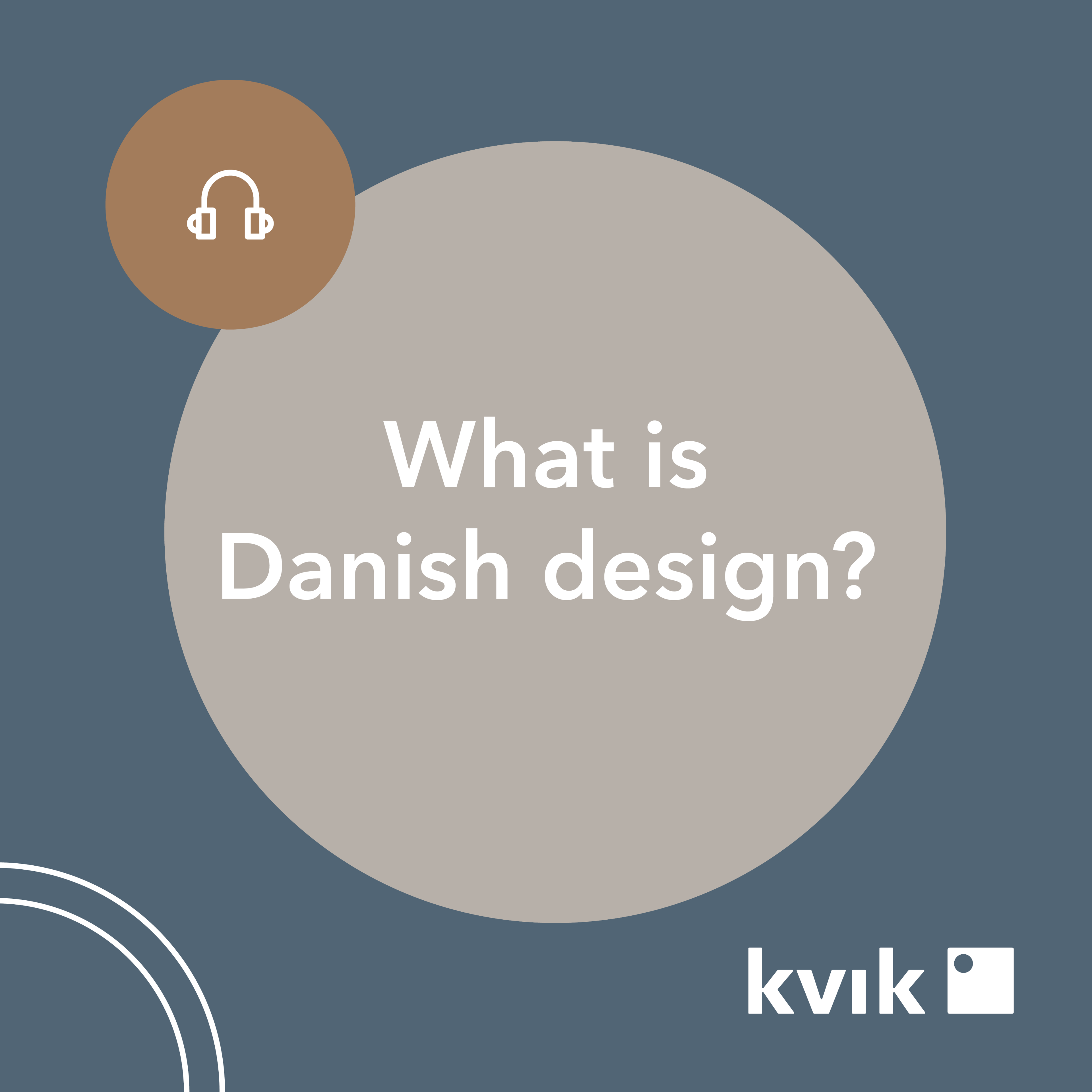
What is Danish design?
What is Danish design?
Intro to the Danish design DNA
Intro to Danish Design DNA

